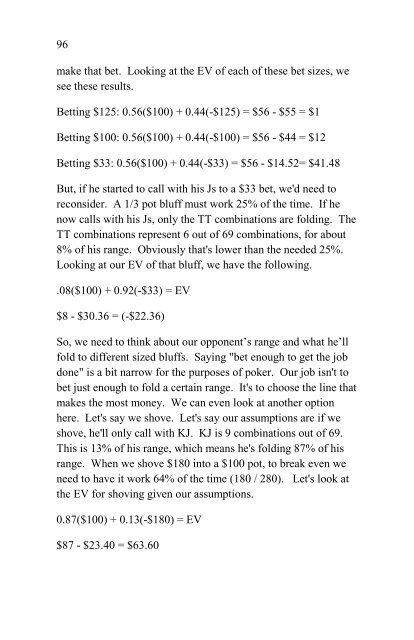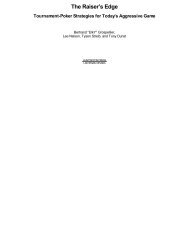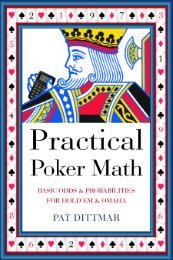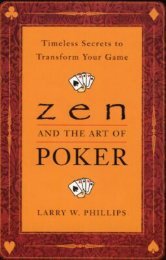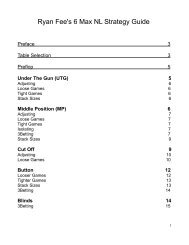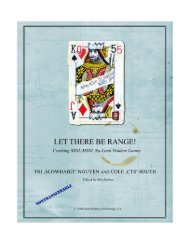Create successful ePaper yourself
Turn your PDF publications into a flip-book with our unique Google optimized e-Paper software.
96<br />
make that bet. Looking at the EV of each of these bet sizes, we<br />
see these results.<br />
Betting $125: 0.56($100) + 0.44(-$125) = $56 - $55 = $1<br />
Betting $100: 0.56($100) + 0.44(-$100) = $56 - $44 = $12<br />
Betting $33: 0.56($100) + 0.44(-$33) = $56 - $14.52= $41.48<br />
But, if he started to call with his Js to a $33 bet, we'd need to<br />
reconsider. A 1/3 pot bluff must work 25% of the time. If he<br />
now calls with his Js, only the TT combinations are folding. The<br />
TT combinations represent 6 out of 69 combinations, for about<br />
8% of his range. Obviously that's lower than the needed 25%.<br />
Looking at our EV of that bluff, we have the following.<br />
.08($100) + 0.92(-$33) = EV<br />
$8 - $30.36 = (-$22.36)<br />
So, we need to think about our opponent’s range and what he’ll<br />
fold to different sized bluffs. Saying "bet enough to get the job<br />
done" is a bit narrow for the purposes of poker. Our job isn't to<br />
bet just enough to fold a certain range. It's to choose the line that<br />
makes the most money. We can even look at another option<br />
here. Let's say we shove. Let's say our assumptions are if we<br />
shove, he'll only call with KJ. KJ is 9 combinations out of 69.<br />
This is 13% of his range, which means he's folding 87% of his<br />
range. When we shove $180 into a $100 pot, to break even we<br />
need to have it work 64% of the time (180 / 280). Let's look at<br />
the EV for shoving given our assumptions.<br />
0.87($100) + 0.13(-$180) = EV<br />
$87 - $23.40 = $63.60


